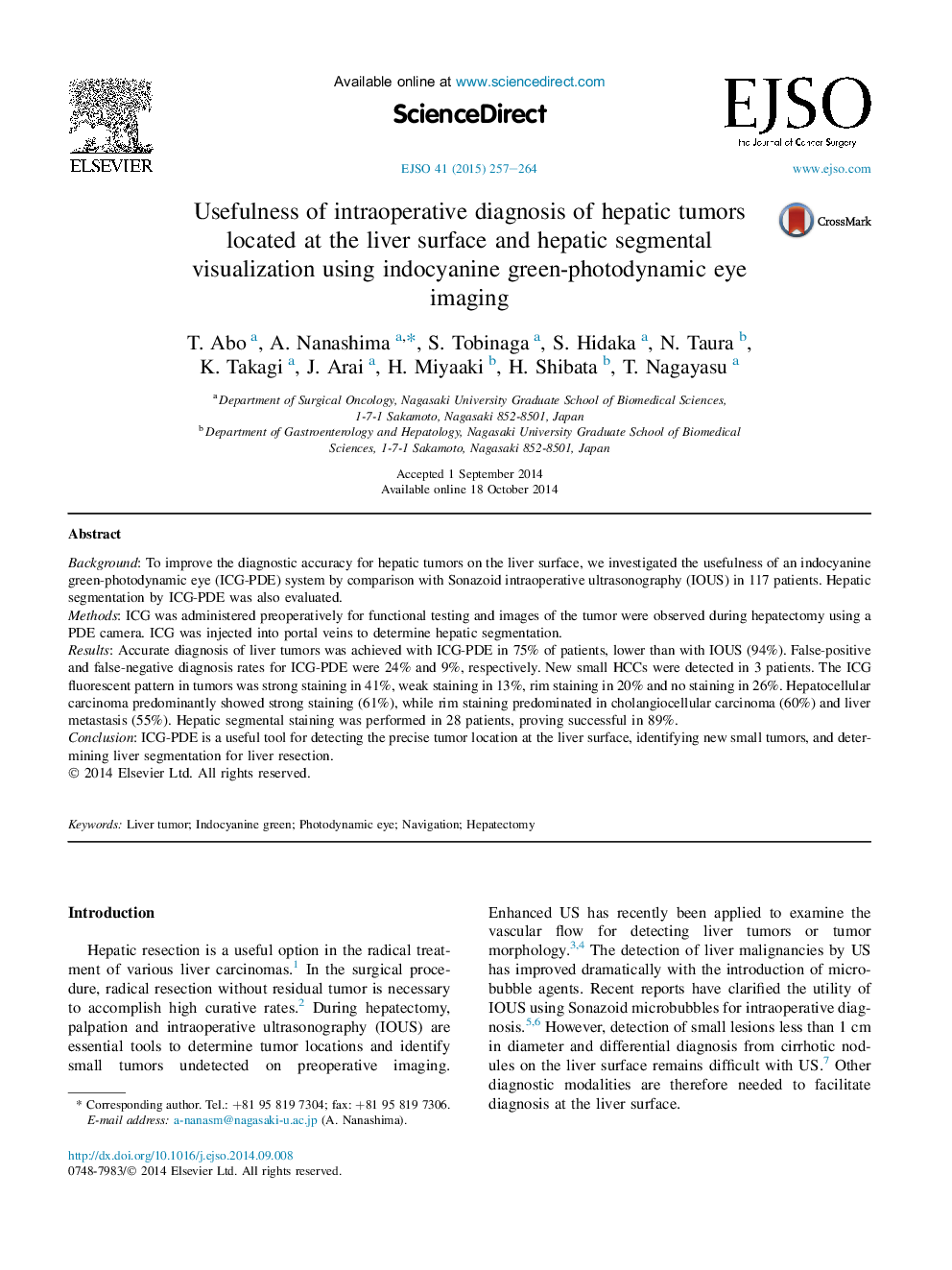| Article ID | Journal | Published Year | Pages | File Type |
|---|---|---|---|---|
| 3984645 | European Journal of Surgical Oncology (EJSO) | 2015 | 8 Pages |
BackgroundTo improve the diagnostic accuracy for hepatic tumors on the liver surface, we investigated the usefulness of an indocyanine green-photodynamic eye (ICG-PDE) system by comparison with Sonazoid intraoperative ultrasonography (IOUS) in 117 patients. Hepatic segmentation by ICG-PDE was also evaluated.MethodsICG was administered preoperatively for functional testing and images of the tumor were observed during hepatectomy using a PDE camera. ICG was injected into portal veins to determine hepatic segmentation.ResultsAccurate diagnosis of liver tumors was achieved with ICG-PDE in 75% of patients, lower than with IOUS (94%). False-positive and false-negative diagnosis rates for ICG-PDE were 24% and 9%, respectively. New small HCCs were detected in 3 patients. The ICG fluorescent pattern in tumors was strong staining in 41%, weak staining in 13%, rim staining in 20% and no staining in 26%. Hepatocellular carcinoma predominantly showed strong staining (61%), while rim staining predominated in cholangiocellular carcinoma (60%) and liver metastasis (55%). Hepatic segmental staining was performed in 28 patients, proving successful in 89%.ConclusionICG-PDE is a useful tool for detecting the precise tumor location at the liver surface, identifying new small tumors, and determining liver segmentation for liver resection.
